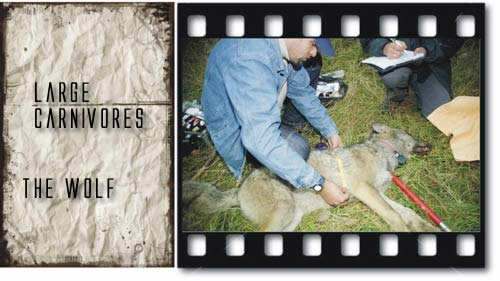|
| Wolf |

|
The wolf is the largest member of the Canidae family, excepting several races of domesticated dogs (Canis familiaris). The wolf and the domesticated dog have the same common ancestor. Due to habitat destruction, environmental changes, human persecutions and other barriers in populations’ growth, grey wolves are now found only in a few areas from the United States, Alaska, Canada, Europe and Asia.
The wolves have an athletic constitution, adapted to long travels. They are digitigrades animals, stepping on the toes pads and with strong, un-retractable nails. The paws have a construction assuring an easy crossing of diverse fields, and especially snow walking.
The males are larger (20-70 kg) and have a body weight larger than that of the females (18-55 kg). Their noses are triangular, with appreciatively 10 cm long, offering an olfactory organ exposure on a large surface, allowing it to determine prey smell in climatic and topographic favourable conditions, from a distance of 3 km.
The wolves generally have a colour varying from pure white to grey-brown, with a long hair. In Romania, wolves have a colour of grey. Wolves are social animals living in familiar groups called packs.These consist of a leading couple (alpha male and female) and their offspring (up until 3 years). In every pack exists a respected hierarchy, and only in exceptional cases are accepted in the pack wolves unrelated with the alpha couple.
Wolves are carnivores’ animals, hunting in pack and generally killing harts, deers, chamois, wild boars, sheep, cattle, horses and dogs. Occasionally they consume dead animal carcases hunted by other species, and when they are starved can eat insects, earth worms, blueberries, blackberries and other vegetables.
|
|






